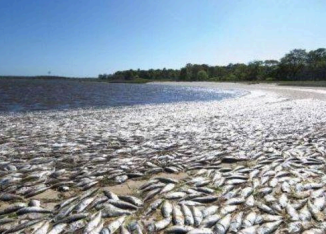
By: Reese McElhiney
Long Island, New York, known for its seaside beauty, is facing a major environmental risk: nutrient pollution. Nutrient contamination has serious repercussions, ranging from dangerous algal blooms to decreased water quality, and requires immediate attention and aggressive remedies. Is there anything we can do to offset these impacts in our own backyard? Or, is it too late?
Nutrient contamination on Long Island is mostly caused by human actions such as farming, construction of homes, and sewage outflow. Extensive fertilizer usage on farms, along with poor wastewater treatment facilities, releases nitrogen and phosphorus into the environment. Runoff from impermeable surfaces exacerbates the situation by transporting contaminants to rivers, streams, and, eventually, the Long Island Sound and Atlantic Ocean. Nutrients that enter bodies of water encourage the growth of algae, which creates hazardous algal blooms. Blooms such as these cause zones of death where aquatic life fights for survival by decreasing the oxygen content of the seawater. Furthermore, harmful algae blooms create poisons that are extremely dangerous to marine organisms, as they can poison shellfish and cause fish kills. Coastal ecosystems are further unstable due to diminished light penetration and restricted growth in seagrass beds, which are vital habitats for aquatic creatures. This is caused by pollution from nutrients.
On Long Island, nutrient pollution degrades the quality of the water, making it harder to appreciate outdoor activities like fishing, boating, and swimming. Increased risk of waterborne infections is caused by pathogens and bacteria multiplying due to elevated amounts of phosphate and nitrogen. Furthermore, an excess of nutrients can cause acidification and upset the fragile equilibrium of the environment by changing the pH balance of the bodies of water. Nutrient contamination has consequences that go beyond harm to the ecosystem and harm human health. The public’s health is at danger from polluted drinking water sources because nitrogen compounds have been connected to unfavorable health consequences such methemoglobinemia (blue baby syndrome) and several types of cancer. Furthermore, eating seafood tainted with algae toxins can lead to neurological conditions and gastrointestinal ailments in people, underscoring the link between environmental and human health. Long Island’s nutrient pollution issues affect local communities in a variety of ways, including economic losses, a decline in the quality of life, and effects on the travel and leisure industries. Algal blooms and deteriorating water quality have negative visual and economic effects on waterfront properties and coastal businesses, endangering livelihoods and property values as well.
In summary, Long Island’s ecological integrity and socioeconomic well-being are seriously threatened by nutrient contamination. Governmental authorities, neighborhood associations, and private citizens must work together to address this urgent issue. The restoration of wastewater treatment facilities, the adoption of sustainable agriculture methods, and the encouragement of watershed stewardship are critical measures in the fight against nutrient pollution and the preservation of Long Island’s ecosystems and people. We can work to ensure that Long Island and its residents have a healthier and more sustainable future by increasing awareness, encouraging collaboration, and acting promptly.